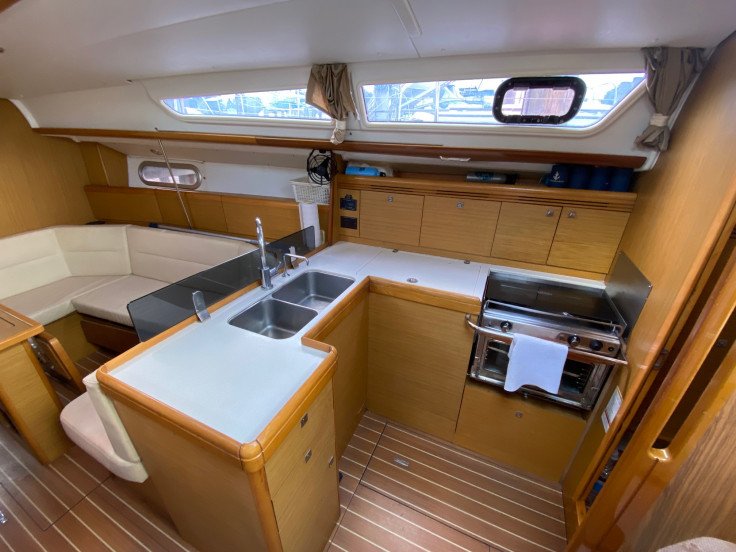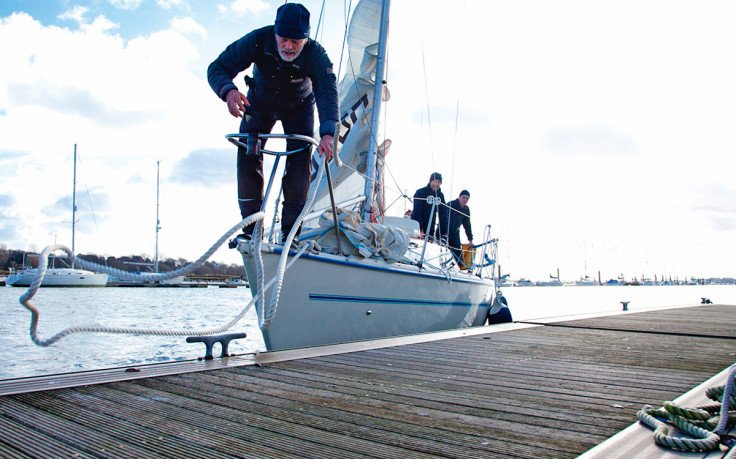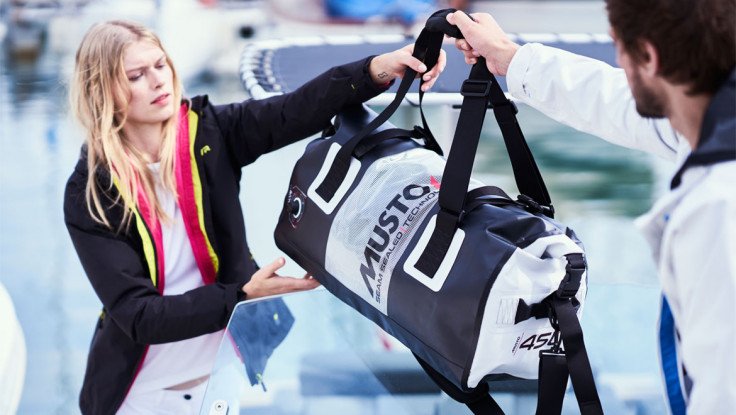If it's your first time going on a sailing trip, you'll probably have a lot of questions about what the experience on board will be like, how you'll interact with the other crew members, or what life on a sailboat will be like if it's your first time on board. It's normal for you to have a lot of questions, so it's best to ask the skipper or the person who coordinates the trip. In addition, we've prepared this article to resolve the most common questions.
-
Choosing the right trip according to your interest
-
How many people sign up for a sailing trip alone?
-
Extra and common expenses: how much is it and how are they managed?
-
Coexistence on board. Cabins, order, bathrooms, showers...
-
Shared tasks on board.
-
The route, schedules, destinations. Can they change?
-
Participate in navigation maneuvers, guard duty, etc.
-
Luggage on board, what should I take?
Choosing the right trip according to your interest
On Sailwiz you can find hundreds of proposals to share a sailing trip with other people who book through the same platform. From an hourly trip to see a sunset at sea, to
crossing the Atlantic on a sailboat for several weeks. In this article we are going to focus on the most popular type of trip, which is usually a week of sailing.
If you have many doubts about whether this experience is for you, because you don't know if you can get seasick, if you will like it or if you will feel comfortable on a boat with strangers, you always have the option of taking a
shorter weekend getaway on a boat , or a few days to try it out for the first time.
Whether you already have experience sailing or not, but you have some idea of what you are looking for, it is advisable that before booking you make sure that the trip you choose meets your expectations, by reading the experience announcement, the evaluations of other users and talking to the captain or trip coordinator.
Bear in mind that there are all kinds of proposals, there are older and newer boats, more spacious and smaller, with extras such as barbecue, toys on board, shower on deck, water maker and others or with the basic amenities. Generally these differences are already intuited by the price, but to make sure that what we book is what interests us, the main thing is to first be well informed and not create expectations without this information.
How many people sign up for a sailing trip alone?
Most bookings made on Sailwiz are for people travelling alone or as a couple. In fact, bookings made through the website are for an average of 1.39 people, with a sample of more than 6,000 bookings. That is to say, if you are thinking of travelling alone, it is very likely that you will find people on board who also travel like that, so you should not worry about being the only person on board travelling alone.
In any case, you always have the option of checking with the skipper how many people are signed up, whether some people are going together or not, etc.
Extra and common expenses: how much is it and how are they managed?
Generally, the activities published on Sailwiz usually indicate what is included and what is not, and sometimes an estimate of the extra costs not included in the trip is included. If the published information does not have this information, it is best to ask the skipper to make sure what extra costs should be taken into account.
The most common thing, although there are exceptions, is that food and fuel are not included and for this reason a pot is usually made between all the crew members. Generally the skipper does not participate in this pot, although he should be taken into account when buying food and drink. Normally the skipper never goes ashore, unless the trip includes moorings in port, so if the rest of the crew is going to eat lunch or dinner on land it is advisable to leave food purchased for the skipper to eat on board.
Other expenses that are usually not included, unless otherwise indicated, are travel to the boat, lunches and dinners on land, any extra activities that may be offered on the trip (for example, diving if it is a diving trip) and sometimes there may be an extra to pay upon boarding for the skipper and cleaning services, although there are some trips here that already have it included in the price.
The responsibility for joint shopping is usually the responsibility of the crew and the skipper usually advises on recommendations for what to eat on board. Although boats have a kitchen and a refrigerator, we should not think that the refrigerator is like that of a house and the kitchen has everything. The normal thing is to have basic equipment and limited refrigerator space.

Sailboat kitchen example
Coexistence on board. Cabins, order, bathrooms, showers...
When we board the ship, the first thing that usually happens is the distribution of cabins. Some trips give the option of reserving an exclusive cabin, either for an extra fee or by paying for two seats. This is not common, but if the trip gives this option, those who have booked this option already have a cabin assigned.
When there are men and women, it is normal for shared cabins to be assigned to people of the same sex. If two people are travelling together, they will go together in the same cabin.
It is important to try to maintain a certain order on board, both in the common areas and in the cabin, for which we should take some time when boarding and preferably before going out to sea to put everything away in the cupboards or drawers that the boat may have. Maintaining order on a boat is more difficult than at home, so if we organize everything well at the beginning it will be easier throughout the trip. In addition, the rest of the crew will appreciate that we keep our things tidy.
Bathrooms are usually shared by the entire crew, except on boats with better facilities or catamarans where all cabins have bathrooms. It is advisable to know how the toilet works and never throw paper into it to avoid blockages. The skipper will teach us how to use the toilet when we board. Most of the toilets on boats work as shown in this video:
As for showers, unless the boat has a watermaker (which is not the norm), fresh water is a very scarce commodity and they must be ultra-fast showers so as not to empty the tank. If we want to have more water than the boat has, we will have to go into port to refuel, which is usually a nuisance when planning the route, or take on board more water bottles to use in the bathrooms and kitchen.
Shared tasks on board.
When we embark on a sailing trip, unless otherwise specified in the trip, we must bear in mind that the tasks of coexistence, such as preparing food, washing dishes or light cleaning and tidying up, correspond to the crew. The skipper usually collaborates in this as one more, unless he has to be aware of the navigation at that time, but it is convenient to keep in mind that the skipper's job is not cleaning and cooking.
If this is a problem for any crew member in these cases, it is best to sign up for a trip that includes, in addition to the skipper, another person on board who is responsible for cooking and cleaning. For this, the best option of this type are
trips on a Turkish gulet , where the comfort on board and the service are more similar to what would be a hotel than a typical sailing trip.
The route, schedules, destinations. Can they change?
Generally, skippers plan routes and trips that are completed in full or mostly, but there are times when the weather prevails and for safety reasons the plan has to be modified.
It is important to bear in mind that
a route and schedule cannot be guaranteed at sea, as the entire trip is subject to the state of the sea and it is the skipper who always has the final say on whether or not it is possible to sail, based on the weather report and his or her criteria. There will be times when it will be necessary to modify schedules, routes or even not sail on a certain day, leave later or return earlier, and this is part of the risk of booking a sailing trip that does not give rise to refunds. Like any other activity subject to weather conditions, it is susceptible to modification.
Sailboats are vessels that are generally prepared for adverse weather conditions, but for obvious safety reasons, the skipper will always avoid taking unnecessary risks and will modify the plan if necessary. Under no circumstances can you go on a sailing trip with the mentality of a large cruise trip.

Navigation is subject to the state of the sea
As for sailing, this is always conditioned by the wind conditions, both in terms of direction and intensity. Sometimes the wind comes from the bow when we want to go to a specific destination and this is a problem since reaching the same destination can take many more hours. If the crew does not want to change the route or there is no option to change it, the boat is sailed by motor and the sail is left for another time.
Participate in navigation maneuvers, guard duty, etc.
All sailing trips by sea have a skipper on board who is responsible for navigation and manoeuvres. There are sailboats that have a lot of automated equipment and allow a single person to handle it, and on other sailboats it is necessary for the crew to help a little, always guided by the skipper, in some manoeuvres.
In any case, it is common that when long voyages are required, the crew takes part in the watches of the helmsman, so that he can rest at some point. The skipper will be in charge of giving instructions so that the crew can keep watch safely and in any case will always be alert to respond to any need.
There are people who enjoy participating in manoeuvres more than others. It is important to point this out to the skipper at the start of the trip so that he can ask for more help from those who enjoy these tasks.
At the very least, the skipper will often need some help when anchoring or when entering and leaving port, to cast off lines and tie up at the berth.

Mooring in port the skipper may need help
If the trip includes a journey of several hours away from the coast, it is important to allow the skipper to rest so that he is in good condition to steer the boat, especially if there is some rough seas and the crew are not used to sailing. For this reason, it is not a good idea to organize an excessive party on board just before a journey of several hours.
Luggage on board, what should I take?
Preparing your luggage for a sailing trip means reducing the volume as much as possible, since space on board is always limited. Sailboats do not usually have washing machines on board, so you have to bear in mind that you will have to wear some items more than once. Fortunately, most trips are in summer and the items take up little space, but be careful, even in the warmest climates,
it is advisable to bring a good sweater and a jacket for the evening , since it can be cold on deck in the early hours of the morning.
The suitcase should not be rigid, as it is difficult to store on a boat. It is advisable to take a flexible travel bag. If we are going to take electronic devices such as tablets, laptops or mobile phones, it is better to take a portable battery, as charging these on the boat is not always easy. The sockets are sometimes only in the cabin of the lounge and there are not as many as there are crew members. What is highly advisable is to take waterproof bags for the mobile phone, as it is a typical accident to go down to the beach with the mobile phone in your pocket and get more wet than expected on the way to the beach or when disembarking.

Flexible and waterproof travel bag
You need to be well prepared for the sun. Bring a hat and sun cream, preferably not spray-on, so as not to stain the deck. Don't forget that on board a boat the sun shines much more and sometimes there isn't enough shade for everyone on deck.
What did you think of this article?
The average rating is 4.74/5




